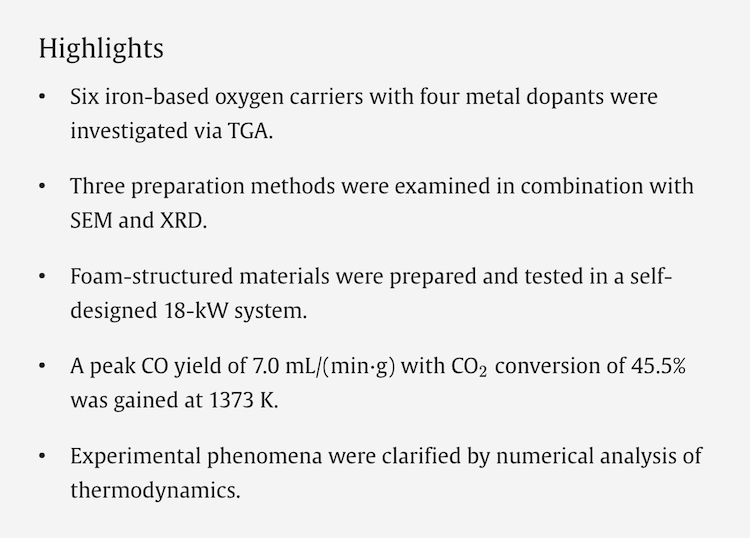
Abstract:
The two-step solar thermochemical cycle is a prospective clean energy technology that enables the direct splitting of water and carbon dioxide for solar fuel production. However, immature oxygen carriers fundamentally restrict the solar-to-fuel conversion efficiency and thus prevent this technology from immediate industrial uptake. Focusing on the conventional iron-based oxygen carriers, this study intends to find a modified oxygen carrier with low reaction temperature requirements and excellent reaction performance, so as to attain dual optimization in terms of thermal efficiency and chemical efficiency. The thermochemical reaction characteristics of six common ferrites and four metal dopants are compared via thermogravimetric analysis under the same programmed temperature control. For further practical applications of the selected oxygen carrier, a foam-structured material with SiC as support is prepared and subsequently experimented in a self-designed 18-kW thermochemical system. The results indicate that the modified oxygen carriers obtained by direct doping of CoFe2O4 with 50wt% NiO exhibit optimal reaction performance, giving the highest CO yield of 439 ol/g. Additionally, the foam-structured material enable a peak CO yield of 7.0 mL min and CO conversion of 45.5% at a reduction temperature of only 1100°C, which might be attributed to the micron-scale pore structure as well as the generation of aluminosilicate crystal structures.
Zhang, H., Zhang, X., Yang, D., Shuai, Y., Lougou, B. G., Pan, Q., & Wang, F. (2023). Selection of iron-based oxygen carriers for two-step solar thermochemical splitting of carbon dioxide. Energy Conversion and Management, 279, 116772. https://doi.org/10.1016/j.enconman.2023.116772
Read more at Energy Conversion and Management.














































